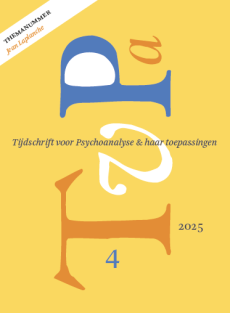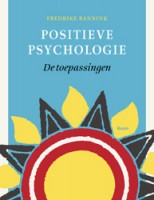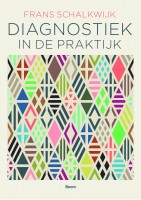Tussen spreekkamer en samenleving
Summary
Between the consulting room and society — On the preservation of psychoanalytic thinking
The societal position of psychoanalysis is chronically insecure. Analogous to an ambivalentpreoccupied attachment pattern, there is currently a response style among practitioners in which psychoanalysis is entangled in a sweeping social adjustment that has a reductive effect on its content. However, analogous in turn to an avoidant-dismissive pattern of attachment, there is also a tendency to idealize and isolate psychoanalysis, which marginalizes it. The socio-dynamics of reductive adaptation and marginalizing idealization is a burden to the substantive professional debate on the relation between psychoanalysis and psychoanalytic psychotherapy and on what works for whom.
The author presumes that autonomous psychoanalytic thinking about the capacities and limitations of psychoanalysis and psychoanalytic psychotherapy is best preserved at the micro- level of the interaction between a patient and a therapist in the reflective space of the consulting room. He supports this postulate with a case study of a treatment consisting of psychoanalysis as well as psychoanalytic psychotherapy. For this purpose, he interviewed a patient and the therapist after the completion of treatment following the procedure of a Patient-Therapist Adult Attachment Interview (pt-aai).
Keywords: follow-up, insecure attachment patterns, professional identity of the psychoanalyst, Patient-Therapist Adult Attachment Interview (PT-AAI), psychoanalysis and society, relation of psychoanalysis and psychoanalytic psychotherapy
Literatuur
- ABEND, S. (1987). Evaluating young adults for analysis. Psychoanalytic Inquiry, 7, 31-38.
- BERGHOUT, C.C. (2010). A cohort study into the effectiveness of long-term psychoanalytic treatment for patients with personality disorders and /or chronic depression. Academisch Proefschrift. Vrije Universiteit Amsterdam.
- BERGHOUT, C.C. & HARTGERS, C. (2010). Routine Outcome Monitoring — Wat komen we te weten door te meten? Voordracht op de Dag van de Psychoanalyse, Vrije Universiteit Amsterdam / Nederlands Psychoanalytisch Instituut, 10 februari 2010.
- BERGHOUT, C.C., ZEVALKINK, J. & WOLF, T. DE (2010). Psychoanalyse en psychoanalytische psychotherapie — Effectgroottes en klinische significantie. Tijdschrift voor Psychotherapie, 36, 22-39.
- DIAMOND, D., CLARKIN, J., LEVY, K., LEVINE, H., KOTOV, K. & STOVALLMCCLOUGH, C. (1999). The patiënt therapist adult attachment interview (pt-aai). Niet-gepubliceerd manuscript, The City University of New York, Department of Psychology.
- DIAMOND, D., STOVALL-MCCLOUGH, C., CLARKIN, J.F. & LEVY, K.N. (2003). Patiënt-therapist attachment in the treatment of borderline personality disorder. Bulletin of the Menninger Clinic, 67, 227-259.
- EHRLICH, L. (2004). The analyst’s reluctance to begin a new analysis. Journal of the American Psychoanalytic Association, 52, 1075-1093.
- GOMPERTS, W.J. (2010). Grote veranderingen op klein formaat — Kwantitatief gestuurde klinische casuïstiek. Voordracht op de Dag van de Psychoanalyse, Vrije Universiteit Amsterdam/Nederlands Psychoanalytisch Instituut, 10 februari 2010.
- LEUZINGER-BOHLEBER, M., STUHR, U., RÜGER, B. & BEUTEL, M. (2003). How to study the quality of psychoanalytic treatments and their long-term effects on patiënts’ well-being — A representative, multi-perspective follow-up study. International Journal of Psychoanalysis, 84, 263-290.
- PFEFFER, A.Z. (1961). Follow-up study of a satisfactory analysis. Journal of the American Psychoanalytic Association, 9, 689-718.
- PFEFFER, A.Z. (1963). The meaning of the analyst after analysis. Journal of the American Psychoanalytic Association, 11, 229-244.
- ROTHSTEIN, A. (1995). Psychoanalytic technique and the creation of analytic patients. Madison: International Universities Press.
- WALDHORN, H.F. (1960). Assessment of analyzability — Technical and theoretical observations. Psychoanalytic Quarterly, 29, 478-506.
 © 2009-2025 Uitgeverij Boom Amsterdam
© 2009-2025 Uitgeverij Boom Amsterdam
ISSN 1382-516x
De artikelen uit de (online)tijdschriften van Uitgeverij Boom zijn auteursrechtelijk beschermd. U kunt er natuurlijk uit citeren (voorzien van een bronvermelding) maar voor reproductie in welke vorm dan ook moet toestemming aan de uitgever worden gevraagd:
Behoudens de in of krachtens de Auteurswet van 1912 gestelde uitzonderingen mag niets uit deze uitgave worden verveelvoudigd, opgeslagen in een geautomatiseerd gegevensbestand, of openbaar gemaakt, in enige vorm of op enige wijze, hetzij elektronisch, mechanisch door fotokopieën, opnamen of enig andere manier, zonder voorafgaande schriftelijke toestemming van de uitgever.
Voor zover het maken van kopieën uit deze uitgave is toegestaan op grond van artikelen 16h t/m 16m Auteurswet 1912 jo. Besluit van 27 november 2002, Stb 575, dient men de daarvoor wettelijk verschuldigde vergoeding te voldoen aan de Stichting Reprorecht te Hoofddorp (postbus 3060, 2130 KB, www.reprorecht.nl) of contact op te nemen met de uitgever voor het treffen van een rechtstreekse regeling in de zin van art. 16l, vijfde lid, Auteurswet 1912.
Voor het overnemen van gedeelte(n) uit deze uitgave in bloemlezingen, readers en andere compilatiewerken (artikel 16, Auteurswet 1912) kan men zich wenden tot de Stichting PRO (Stichting Publicatie- en Reproductierechten, postbus 3060, 2130 KB Hoofddorp, www.cedar.nl/pro).
No part of this book may be reproduced in any way whatsoever without the written permission of the publisher.
Nieuwsbrief Boom Psychologie
Meld u nu aan en ontvang maandelijks de Boom Psychologie nieuwsbrief met aantrekkelijke aanbiedingen en de nieuwe uitgaven.
Aanmelden


